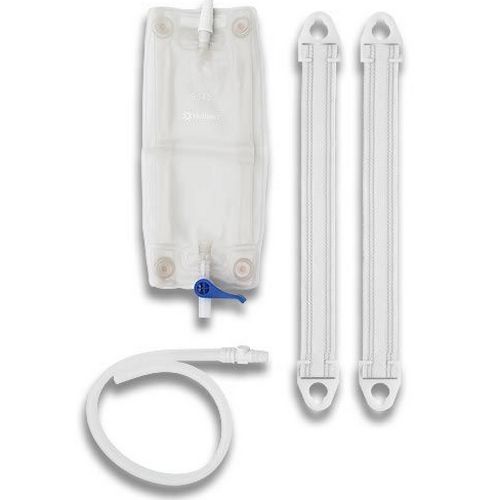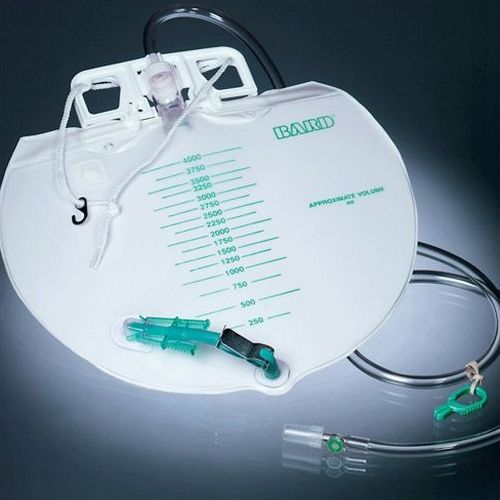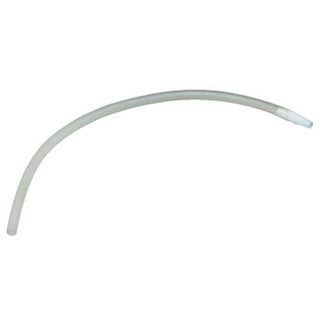Sleeping with a Catheter: Choosing Between a Urinary Leg Bag and an Overnight Drainage Bag
Updated November 16, 2023

What is a Urinary Leg Bag?
A leg bag is a specialized device designed for urine collection. These bags, wearable above or below the knee, offer a range of features and styles to meet individual needs:
- Connection: Leg bags can connect directly to Foley catheters or external condom catheters. For those who prefer wearing the bag on the calf, extension tubing can be used for the connection.
- Versatility:
- Styles & Sizes: There are numerous designs available to cater to personal preferences.
- Strap Varieties: Choices include button closures, Velcro straps, and combination designs where bags attach to straps via buttons.
- Leg Bag Holders: For those who dislike straps, leg bag holders resembling leggings are available. These come with pockets to securely hold the bag. They can be found in both "thigh" and "knee/calf" styles.
- Usage Considerations:
- Position: For effective urine drainage, the leg bag should be positioned lower than the bladder. This makes them ideal for use while standing or moving.
- Resting: Typically, leg bags aren't designed for lying down, with the exception of the Rusch Belly Bag. However, it's worth noting the Rusch Belly Bag is only compatible with Foley catheters.
- Activity: Despite requiring a catheter, individuals can still partake in many day-to-day activities with the aid of leg bags.
Feel free to explore different styles and find the best setup for your comfort and convenience.
What is an Overnight Drainage Bag?
Overnight urinary drainage bags are designed specifically for nighttime use, providing several advantages:
- Size and Capacity: These bags are substantially larger than typical leg bags. Their significant capacity ensures that users don't need to wake up to empty them during the night.
- Extension Tubing: Equipped with approximately 60" of extension tubing, these bags allow users greater mobility in bed without the risk of tugging or displacing the catheter.
- Design Variety:
- As with leg bags, overnight bags are available in numerous styles.
- Drainage mechanisms differ, with each bag featuring a unique closure valve.
- Positioning for Optimal Use:
- To function correctly, the bag must be positioned below the level of your bladder.
- It shouldn't be hung from elevated areas like the bed's headboard. Ideally, it should dangle from the bed's side.
- Placing the bag inside a waterproof bin can be a practical choice. If doing so, ensure the bag is securely hung to avoid tipping within the bin.
- Additional Tip: Keeping a spare overnight drainage bag can be beneficial in case of unexpected leaks or other issues.
Considering these factors ensures a hassle-free and comfortable night while using an overnight urinary drainage bag.
Should I Use a Urinary Leg Bag or Overnight Drainage Bag?
Should I Use a Urinary Leg Bag or Overnight Drainage Bag?
Understanding the differences between an overnight drainage bag and a urinary leg bag is essential for individuals using them. One of the most prominent distinctions is the overall size of each product.
Overnight Drainage Bag - Designed to hang next to your bed during sleep or rest.
- Capacity: Ranges from 2000 ml to 4000 ml, allowing for a full night's sleep without the need to empty it.
Urinary Leg Bag - Meant to be worn on the leg during daily activities it includes leg straps that secure around the thigh or calf and has a discreet design that can be worn under pants and even some shorts.
- Capacity: Typically between 19 and 32 ounces, requiring emptying when about 3/4 full.
By opting for an overnight drainage bag, both the user and their caregiver can benefit from uninterrupted rest without the hassle of emptying the bag in the middle of the night.
How to Switch from a Urinary Leg Bag to an Overnight Catheter Bag

- Put on disposable exam gloves (this helps reduce contamination).
- Empty the leg bag, be careful not to open the drainage valve until you are over the toilet.
- Remove the leg bag from the catheter if it is connected directly to the Foley catheter or remove it from the extension tubing if that is what you are using to connect the the catheter to the leg bag.
- Do not contaminate the Foley catheter by letting it touch the floor or any area that is non-sterile! For extra security, use a disposable underpad to give yourself a clean work surface.
- Before attaching the Foley catheter to the overnight drainage bag you should wipe the end of the catheter with an alcohol prep pad to sanitize the area, also wipe the tubing connector with the prep pad too.
- Once the Foley catheter connection is sterilized, attach it to the overnight drainage bag's tubing connector and place the bag in a water-proof bin or hang it from the lower part of the bed.
*These are instructions for people who are using Foley catheters. For external catheter users, the instructions are the same but you will not need to sterilize the catheter tubing or the top of the external catheter before switching to the overnight drainage bag. The added sterilization for Foley catheters is a precaution because using Foley catheters can put you at risk for urinary tract infections. It never hurts to be cautious and sometimes the small steps we take can help us avoid big problems. Make sure you consult your healthcare provider before changing your routine.
FAQ: Sleeping with a Catheter and Leg Bags
What are the risks of sleeping with a catheter leg bag?
Sleeping with a catheter leg bag carries several potential risks, including:
- Urinary tract infections (UTIs) from prolonged use or poor hygiene.
- Overflowing, especially if the bag is not emptied before bed.
- Restricted blood flow or discomfort if leg straps are too tight.
- Tugging, dislodgement, or kinking of the catheter tubing due to movement during sleep.
- Backflow of urine if the drainage bag is positioned above bladder level.
To reduce these risks, use a larger overnight bag, keep tubing free of kinks, and position the bag below the level of your bladder at all times.
Can you wear a catheter leg bag at night?
Yes, it is possible to wear a catheter leg bag at night, but certain precautions should be taken:
- Use a larger-capacity overnight drainage bag, which is better suited for longer periods of use.
- Secure all tubing and the bag properly to avoid dislodgement during sleep.
- Always place the bag below bladder level—either on the floor or hanging from a bedside hook—to prevent backflow.
- Empty the leg bag before bed and consider switching to a night bag for comfort and capacity.
- Avoid any kinks in the tubing, which can prevent proper drainage and increase infection risk.
For optimal results, consult your healthcare provider about whether a leg bag or night bag is more appropriate for your situation.
How to sleep with a catheter leg bag?
If you choose to sleep with a catheter leg bag, follow these tips to stay safe and comfortable:
Precautions and Setup:
- Use a larger overnight drainage bag to avoid overflows.
- Disconnect the leg bag at night and attach the catheter to a night bag instead.
- Position the bag below your bladder—on the floor or hanging from a bedside hook.
- Ensure all tubing is free from kinks and secured with medical tape to prevent pulling or dislodgement.
- Avoid tightening leg straps too much, as this can restrict circulation.
Hygiene and Maintenance:
- Empty the night bag in the morning, then switch back to the clean leg bag for daytime use.
- Clean the leg bag thoroughly with warm water and mild soap before reusing it.
- Regularly check for signs of infection or leakage, and monitor for changes in urine color or odor.
Always consult your healthcare provider to determine the best nighttime setup for your condition.
How long should a catheter be left in?
The duration a catheter should be left in depends on the type of catheter, its purpose, and individual medical needs. Some may be required for a few days, while others might be necessary for weeks or longer.
To avoid complications such as infections, it's essential to:
- Follow proper cleaning and maintenance routines for both the catheter and drainage bags.
- Regularly inspect the catheter site and urine output.
Attend all follow-up appointments to assess catheter function and discuss removal or replacement timelines.








